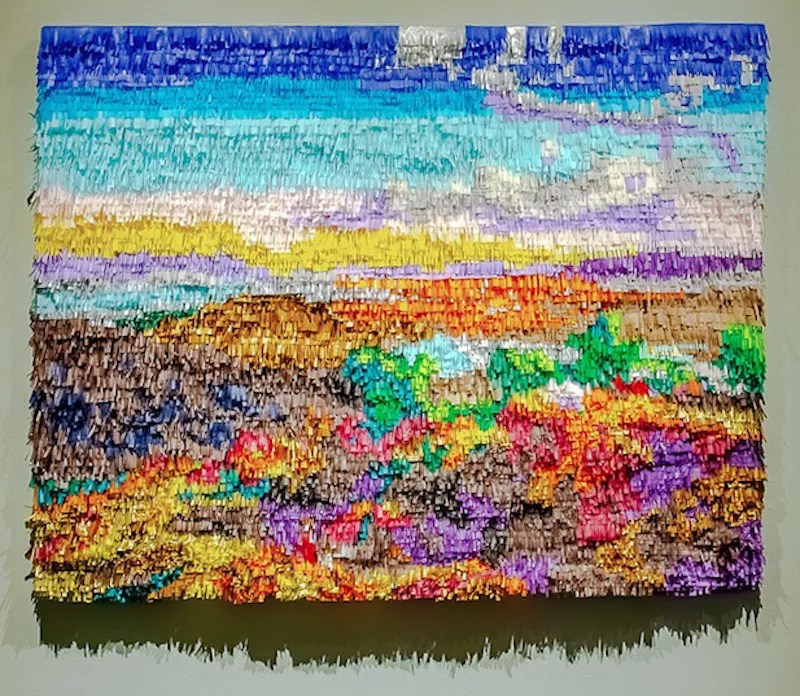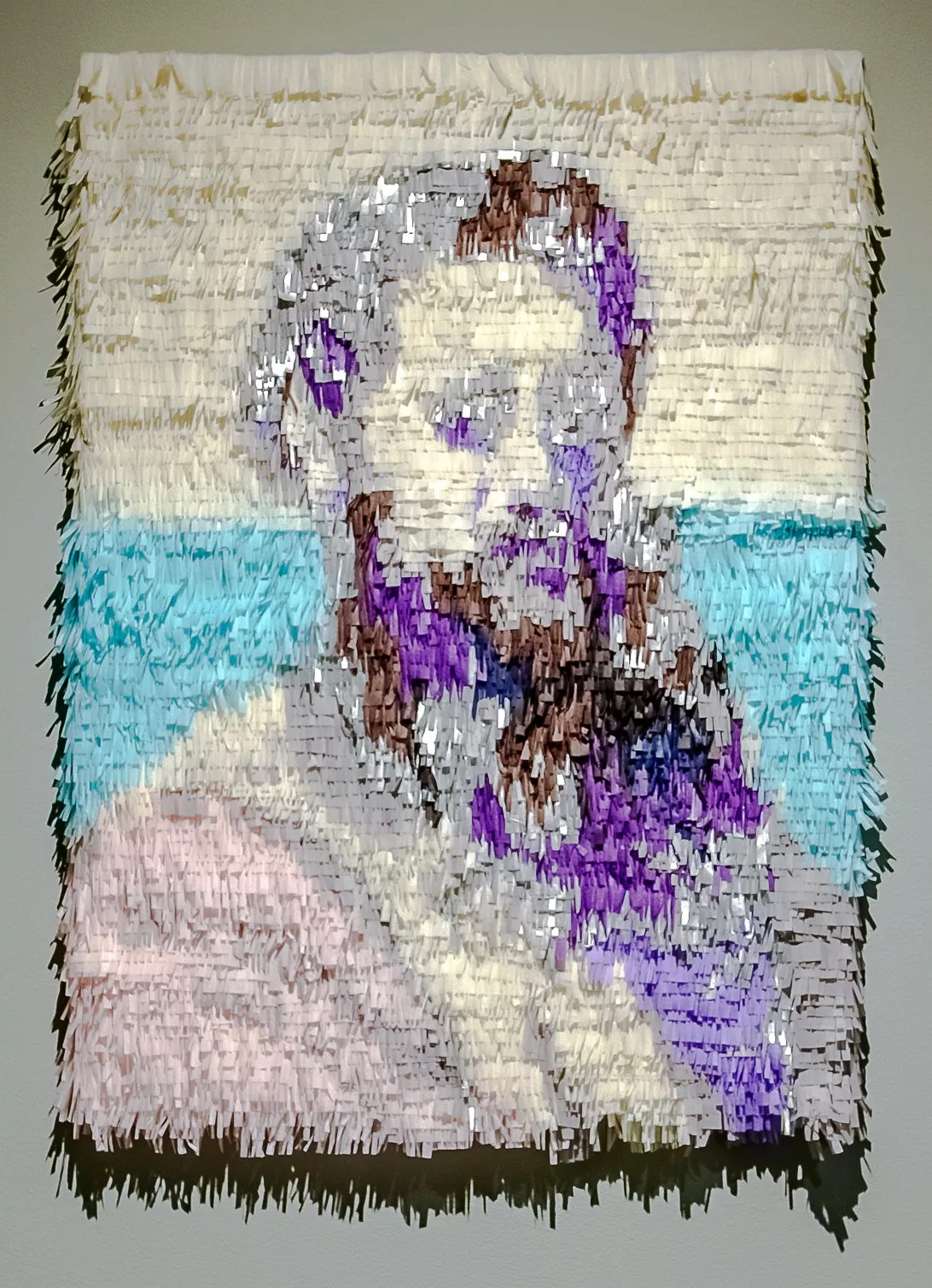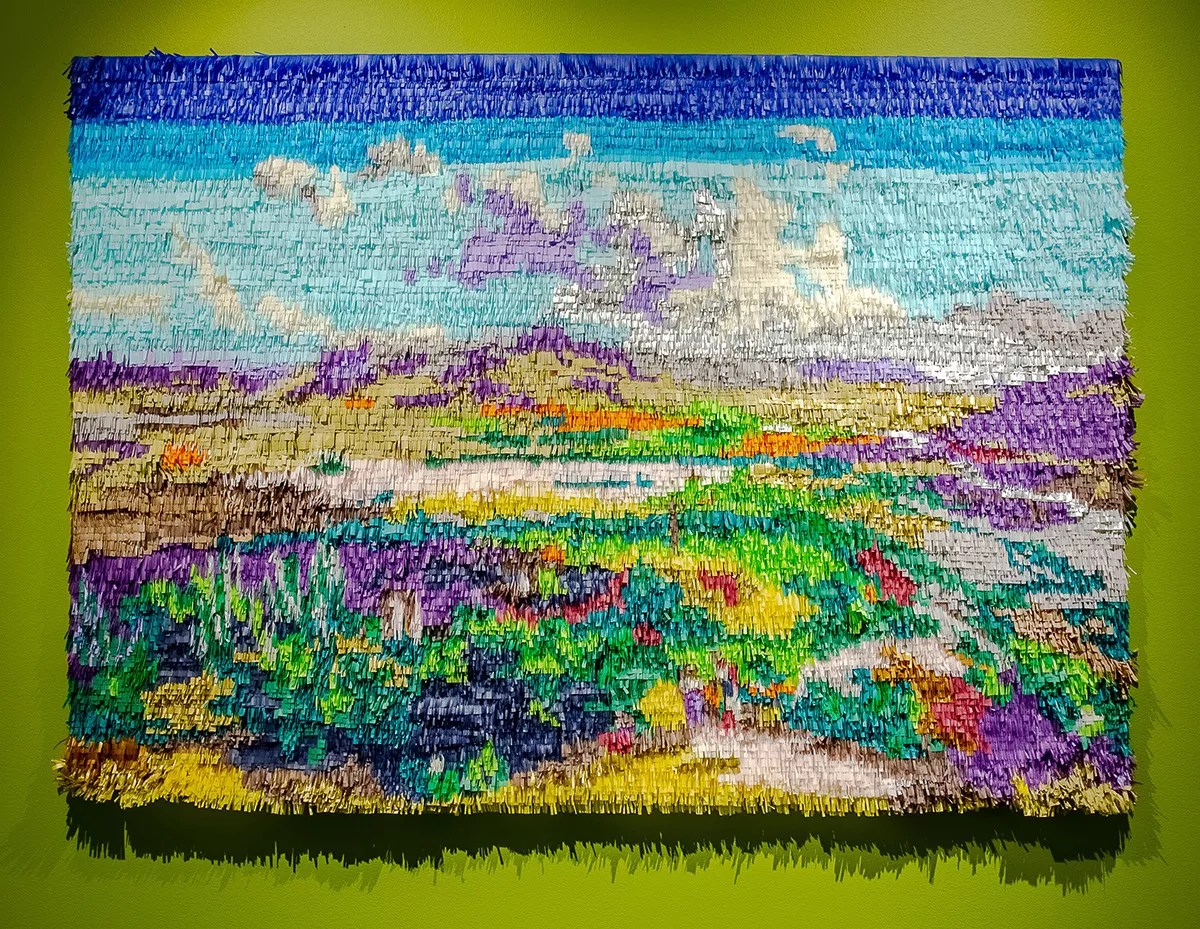
Justin Favela, David B. Smith Gallery

Audio By Carbonatix
Justin Favela is an uncomplicated guy. The artist and podcaster offers no deep critical theory about his work, which grew out of an amalgamation of his personal experiences: family and friends, collaborators, gay and Latino culture, side stories in art history and, perhaps most notably, a constant barrage of the popular culture that’s accompanied his long rite of passage. He interprets all of these things with the tissue-paper craft of piñata-making and a sensibility borrowed from his immediate world, which he also explores on video with his fellow conspirator and Latinos Who Lunch podcaster, art historian Emmanuel Ortega, aka “Babelito.”
Though he lives in Las Vegas, Favela has a considerable following in Denver, where his large-scale piñata installations, including a tissue-paper tribute to Frida Kahlo and a life-sized lowrider piñata, have been exhibited at the Denver Art Museum and Museo de las Americas. His next foray into Denver – the solo exhibition Re/Presenting México: José María Velasco and the Politics of Paper – opens Friday, March 29, at David B. Smith Gallery.
In advance of the show, we caught up with Favela to talk about his work…and play.
This year, make your gift count –
Invest in local news that matters.
Our work is funded by readers like you who make voluntary gifts because they value our work and want to see it continue. Make a contribution today to help us reach our $50,000 goal!

Justin Favela,
Justin Favela, David B. Smith Gallery
Westword: Who interests you in the art world at large?
Justin Favela: I don’t follow a lot of art people. Mostly I follow my peers – people I’ve worked with before or am working with now. As far as people who influence me the most goes, they are people from within my community.
I also listen to a lot of podcasts. I guess podcasts are my main influence, because I have one in my ear all the time.
Who are your heroes?
I guess my personal heroes are my family members – my grandmothers, my mom. I make a lot of work inspired by or in honor of them. One grandmother is a maker – she’s really crafty – and I try to work with her on at least one project a year. She loves making things, and I think that’s where my own creativity stems from.

Justin Favela,
Justin Favela, David B. Smith Gallery
What was the genesis of your work rooted in the craft of piñata-making?
Making things with piñata materials was interesting to me because they tie into my culture and they’re so accessible. I use materials that anyone could buy. I think by now I’ve got a good grip on tissue paper!
How does cultural life figure into your large-scale works and installations?
I grew up watching TV, so pop culture is big influence, and once I got into art history and pop images, pop art also became an interest of mine. My work references both famous paintings and cartoons and movies I enjoy.
What do you hope to convey about the intersection of Latino and LGBTQ cultures?
When I start to be identified as a queer artist, that’s fine. That’s great, because it gives me another dimension as an artist. A lot of times for artists of color, that’s all you’re seen as, so in that respect, it’s actually positive to also be labeled LGBTQ. People tend to have expectations of what the work by Latino artists should look like.
You’re also a podcaster. What’s that all about?
Latinos Who Lunch is about Latino culture in Las Vegas, and it’s just me, FavyFav, and my art-historian friend, Babelito, having fun talking. But I have another podcast called The Art People, where I meet with curators and artists to talk about what they are doing. In the art-world setting, I don’t have the language to express myself. I don’t know who the hottest artists are or what people are doing, so it’s a way for me to learn about the art world. And I already learn about my own culture through Latinos Who Lunch.

Justin Favela,
Photo: Daniel Salazar, Museo de las Americas
What will you be showing in Denver?
This show is all replicas of paintings by José María Velasco, a painter in Mexico in the nineteenth century. This was before Frida, before Coco, when artists were trained to make beautiful, romantic landscapes to show the beauty of Mexico to people in Europe. It really was an agent of colonization.
I was thinking of his paintings as symbols of a nation, and how those images were used as a tool to manipulate people. It’s the same as what media does: movies pulling on heartstrings – comedy, stereotypes. His paintings do that very thing, and there’s no better way to translate his paintings than by using another medium, which is piñata art. I want to eventually make scale paintings of every painting he’s made; I’m a quarter of the way there.
The series I’m showing at David B. Smith, I originally made last year for a show at the Berman Museum.
What do you hope viewers gain from the work?
I hope they gain a new painting that they can buy at the gallery!
Justin Favela’s exhibition Re/Presenting México: José María Velasco and the Politics of Paper opens with a reception from 6 to 8 p.m. Friday, March 29, and runs through May 4 at David B. Smith Gallery, 1543 A Wazee Street. Learn more about Justin Favela online.